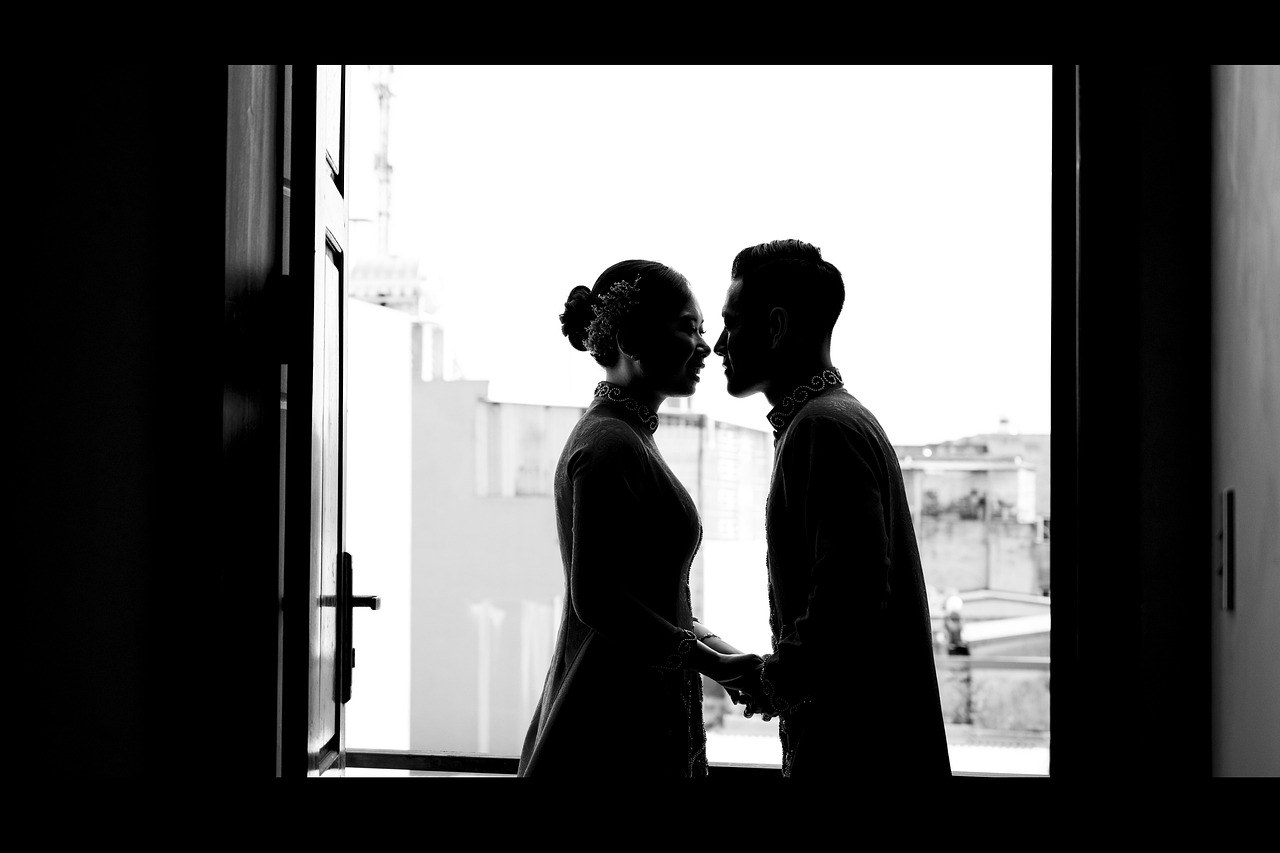Most people can point to a chapter in their romantic history that seems to shimmer a little brighter than the rest – the person who slipped through their fingers, the almost-relationship that never quite found its timing. Many of us have a name for it: the one that got away. That phrase carries a mix of ache and wonder because it holds two truths at once – something beautiful was possible, and it never fully happened. When you think about the one that got away, you might feel a rush of curiosity about the life you didn’t live, along with a tug to look back even when you’re trying to move forward. This piece explores why that pull feels so strong, how to tell it’s still shaping your present, and what it actually looks like to release it without erasing what it taught you.
How the mind builds a myth
Our memories are storytellers. They shorten, edit, and rearrange scenes until the plot makes sense, often smoothing over the awkward moments that once irritated us and spotlighting the highlights that still glow. That creative revision can transform an ordinary connection into an almost-legend – especially when the ending came too soon or never really came at all. The mind dislikes unfinished business, so it fills the gaps with imagined conversations, dream outcomes, and polished “what ifs.” Before long, the one that got away can feel less like a person and more like a symbol: a door that might have opened if only the hinge had turned a little quicker.
Attachment patterns play a part, too. People who tend to worry about closeness often revisit old chapters to search for missed cues or second chances, while those who lean more avoidant may insist they’re over it – yet still feel a private sting when reminders surface. Even secure, well-adjusted folks can feel the tug when a connection was meaningful but mistimed. That’s because the one that got away isn’t merely a character in your past – it’s a mirror that reflects who you were becoming and what you wanted back then.

Nostalgia intensifies the glow. Songs, streets, seasons, and scents braid the past into the present until a small trigger opens a floodgate. Add the modern habit of peeking at old photos or profiles and the story gains fresh episodes. With each revisit, the brain rehearses the softer scenes and leaves the rough edges on the cutting room floor. It’s not deceit – it’s how memory prioritizes emotional meaning. That’s why the one that got away can feel startlingly alive years later, even when your lives have diverged.
Signs the past is still calling
If you’re wondering whether an old almost-love still has a hand on the wheel, look for steady patterns rather than a single emotional spike. Occasional nostalgia is human; ongoing habits suggest your attention remains anchored to the one that got away. The following signs do not diagnose anything – they simply help you notice where your energy still flows.
Revolving thoughts. Your mind loops back during quiet moments, replaying conversations and alternate endings. The one that got away appears not only when you’re sad, but also when you’re bored, hopeful, triumphant, or lonely – as if they’re stitched into your internal soundtrack.

Silent comparisons. New dates or current partners are measured against a private standard. Even when you try not to, you contrast habits, humor, chemistry, or vision with the one that got away, and present-day experiences feel slightly muted by the comparison.
Emotional aftershocks. A casual mention of their name, city, or favorite café can spark an outsized wave – tenderness, regret, or a sudden ache that seems larger than the moment deserves.
Shifts in priorities. You chose a career move, a city, or even a hobby because of what that connection awakened in you. Your map changed course around the imprint left by the one that got away.

Digital lingering. You scroll their updates, skim their photos, or quietly track milestones. It isn’t about intrusion – it’s about staying near a story you don’t feel finished telling yourself.
Dream cameos. They wander into dreams or daydreams where the timing finally aligns. You wake up with feelings that sit on your chest like morning fog, hard to shake even after coffee.
Routes you avoid. You take the longer way to skip a particular street, café, gym, or venue that lights up a reel in your mind. The detour feels easier than the sudden rush that follows a familiar doorway.
Memory switches. A song, a season, or a certain perfume flips a hidden switch. In a blink, you’re back in a night that still seems warm to the touch – and the one that got away is standing there like it was yesterday.
Saved keepsakes. Notes, ticket stubs, playlists, or screenshots stay tucked in drawers or folders. You tell yourself you’ll toss them soon, but not today. Keeping them feels like keeping a fragment of the person you were with the one that got away.
Comfort cravings. On hard days, your mind reaches for their steadiness, their laugh, or simply the idea of how seen you once felt. The image is soothing – even if the reality was more complicated.
News you dodge. A friend begins, “Did you hear they…” and your stomach tightens. You want to know and not know at the same time, especially if the update involves new love or big joy that doesn’t include you.
Dates that still flicker. Anniversaries, birthdays, or the week you met glow on the calendar. You don’t plan to remember – you simply do. The one that got away keeps a quiet reservation in your mental yearbook.
Noticeable mood shifts. After reminiscing, your energy dips or spikes in ways you can’t easily explain. A simple recollection changes the color of your day.
Unreachable pedestal. No one else quite measures up. You sense you’re comparing real people to a polished highlight reel crafted around the one that got away, yet the habit persists.
Impulse to reach out. Out of nowhere – after a big win, a holiday, or a rainy afternoon – your fingers hover over a message. You write and delete, write and delete, negotiating with hope and hesitation.
Choice echoes. You lean toward people who share their traits or steer clear of those who do. Either way, the one that got away remains a compass you consult more than you admit.
Stuck gears. New starts feel heavy, as if part of you is still waiting at an old station for a train that left years ago. A sense of unfinishedness keeps idling in the background.
Random flashbacks. A stranger’s gestures or a corner table unlocks vivid scenes – their laughter, the late-night walk, the almost-kiss – and the moment blooms in high resolution.
Strong reactions. Jealousy, tenderness, protectiveness, or grief arrives quickly when their life crosses your feed or your friend group. The intensity surprises you.
Hard-to-say words. You avoid discussing them with people who matter to you. Protecting the memories feels easier than hearing a perspective that might complicate your private narrative of the one that got away.
Shared futures you still carry. Old plans – trips, cities, pets, projects – hover like ghost-blueprints. You can almost see the parallel life where those sketches became rooms you lived in.
Ongoing appetite for closure. You replay the final chapter to locate the exact sentence where the story veered. If you could name it neatly, you imagine, peace might finally arrive.
Quiet hope of reconnection. Part of you watches for a window to reopen. You imagine a new beginning where timing cooperates and the one that got away becomes the one who returned.
Why the longing can be more dream than fact
When you’re honest about the picture in your head, you may notice how little conflict it contains. The mind edits arguments, mismatches, and incompatibilities to preserve a tender myth. In the highlight reel, the one that got away always understands, always shows up, always chooses you – even if the lived version sometimes didn’t. Romanticizing isn’t a flaw in character; it’s a way of protecting a bright memory from the weathering of time.
Change complicates things as well. You’re not the same person you were then – and neither are they. Circumstances, values, stressors, and seasons reshape people in quiet increments. The qualities you adored might have shifted for both of you, turning a once-magnetic fit into a harder puzzle. Remembering this doesn’t diminish what you shared; it simply restores dimension to a picture that nostalgia tends to flatten.
Cultural stories amplify the myth. Films and songs promise that true love circles back, that doors never really close, that fate keeps score. Those scripts can be stirring – and subtly misleading. They encourage us to see coincidence as destiny and ambiguity as a sign. Under their influence, the one that got away becomes a universal archetype rather than a particular person with strengths and limits.
Sometimes the fantasy covers everyday fears. When life feels uncertain, it’s easy to drift toward a remembered connection that required no risk in the present. You can feel cherished without asking for anything, intimate without revealing anything, hopeful without being vulnerable. The image of the one that got away becomes a refuge – sweet, safe, and just out of reach – which keeps it from being tested by reality.
There’s also the matter of selective memory. The mind highlights warmth, chemistry, and promise, gently dimming the clashes, mismatched goals, or repeated misunderstandings. Comparing a living, imperfect relationship to an immaculate memory is unfair by design; the memory yields under pressure, while real life asks for repair, compromise, and patience.
Ways to loosen the grip without erasing the good
Letting go isn’t a single act – it’s a practice. You can honor what the connection gave you while releasing the parts that keep you stuck. The aim isn’t to force forgetting but to reclaim your present. These approaches can help you walk forward with steadier feet, even while the one that got away remains a meaningful page in your story.
Name what you’re missing. Is it the person, the timing, the version of yourself you were with them, or the possibility you glimpsed together? Clarity drains the fog. When you separate the person from the idea, the one that got away begins to return to human size.
Trace the lesson. Ask what the connection revealed about your needs, boundaries, communication, and dreams. Growth is the dividend of almost-love. Turning insight into behavior change prevents you from reliving the same chapter with new characters.
Make new memories on purpose. Fill your calendar with experiences that ask for your full presence – a class, a weekly game, a standing dinner with friends, a creative project. Novelty rewires attention; it gives your mind fresh scenes to hold that are not organized around the one that got away.
Widen your circle. Strengthen ties with people who make you feel both known and challenged. New perspectives dilute the old narrative and introduce angles you couldn’t generate alone.
Express the unsaid. Journal the message you’ve drafted a hundred times and never sent. Speak it into a voice note meant only for you. Giving words to the residue lets your nervous system settle – you stop negotiating with silence.
Set small, forward-leaning goals. Choose targets that have nothing to do with romance – health, craft, finances, travel, service. Progress occupies the space where ruminations tried to live. Each step confirms that your story advances even without the one that got away.
Practice present-moment attention. Gentle check-ins – feeling your feet on the floor, naming five things you see, noticing your breath – interrupt the mind’s time travel. Presence doesn’t banish memories; it reduces their power to steer.
Date with open eyes. When you’re ready, meet new people without making them audition for an old role. Retire the comparison scoreboard. Allow a connection to show you what it is, not what it isn’t. If you catch yourself measuring against the one that got away, pause, reset, and return to curiosity.
Invite support. A trusted confidant or a skilled counselor can help you untangle idealization from reality, grief from longing, and hope from habit. Speaking the story aloud often reveals how it’s been holding you.
Celebrate the self you kept. Not all departures are losses. Sometimes what you retain – your values, your standards, your humor, your care – is the real treasure. Affirm the qualities that grew because of the relationship and the ones that endured after it ended. That perspective softens the hold of the one that got away and returns authorship to you.
Reframing the chapter
Every relationship, almost-relationship, and near-miss contributes something – a vocabulary for love, a map of needs, a clearer sense of your boundaries, a reminder of your resilience. You don’t have to deny the sweetness to release the story. You can thank the season for what it gave and still refuse to live there. The one that got away becomes less of a lighthouse you’re sailing toward and more of a star in a constellation you can navigate by – visible, meaningful, and no longer dictating your course.
When the memories brighten, let them. When they sting, breathe around them. When they try to anchor you, choose motion – a call to a friend, a page in a notebook, a walk at dusk, a plan you can touch. Over time, your present grows heavier than your past, and the horizon pulls stronger than the echo. You carry forward what matters: the courage to love again with clearer eyes, the wisdom to name your needs sooner, and the softness to stay open. That is how you honor the story without letting it run the rest of the plot – and how the one that got away gracefully returns to being what they’ve always been: a part of your journey, not its destination.